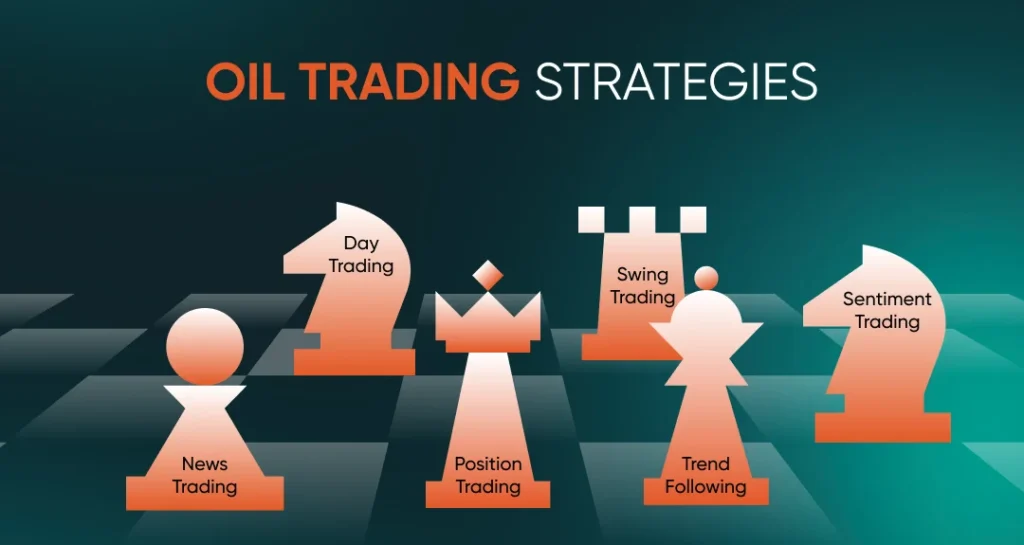

Oil Trading Strategies: The Importance of Fundamental Analysis
We often consider precious metals, such as gold or silver, when considering the commodity market. Still, another commodity that is also popular amongst traders is the oil market. The oil market provides opportunities to gain in most market conditions, as it has a special standing in the economic and political world. It can also provide consistent returns for long-term and short-term traders. To trade successfully in this industry, you must learn its special characteristics and devise a strategy. So, in this article, we’ve compiled the best oil trading strategies and tools for curious traders.
What is Crude Oil?
Crude oil is a naturally occurring fossil fuel and the most used energy source in the world. It powers electricity, vehicles, and more. Oil trading occurs when traders make a profit by buying and selling different types of oil and oil-linked assets.
The most commonly traded crude oil is Brent and West Texas Intermediate (WTI), both of which serve as industry benchmarks. Brent crude oil is extracted from the North Sea, the benchmark for most of the oil produced in Europe, Africa, and certain parts of the Middle East. WTI crude, however, is the benchmark for oil production in North America.
How to Trade Oil?
There are a variety of ways to trade oil aside from physical commodities:
Contracts for difference (CFD)
Stocks
Futures
Exchange-traded funds (ETFs)
Spread betting
Options
With platforms such as TMGM, you’ll gain access to different asset classes for the oil market and the ability to invest in Brent and WTI. TMGM offers up to 1:200 leverage and top-tier liquidity. Get a demo account and learn more here.
Oil Trading Strategies
Oil trading strategies generally revolve around two types of analysis: technical and fundamental.
Depending on the trader, either analysis can be used for oil trading, but successful oil trading must include some fundamental analysis.
Fundamental analysis is a type of analysis that involves studying any security’s intrinsic value to make profits while trading in it. This is done through analyzing a company’s financial statements and overall financial position in the economy to uncover the investment’s true value.
What Affects Oil Price?
Economic Activity
There is a positive correlation between oil prices and the economy. A nation's economic performance tends to drive the oil demand. During economic upswings, demand rises, and during financial hardships, demand falls.
For instance, during COVID-19, there was little demand for oil, causing an oversupply. Subsequently, oil prices fell quickly.
Global Conflict
Global conflict can also cause oil prices to fluctuate, especially if the conflict occurs between two oil-producing countries.
Supply Outages
Supply reductions can raise global oil prices. This can occur due to equipment malfunctioning or destruction. For instance, if an oil refinery were destroyed during war or conflict, it would affect oil production and reduce global output.
International Relations
Oil diplomacy involves using oil as a political and diplomatic tool. If the relationship between two countries deteriorates, this can negatively impact the demand or supply for a country’s oil, increasing oil demand elsewhere.
US Dollar (USD)
Since oil is priced in USD, prices affect each other. When the US currency is performing well, oil prices can be high for non-dollar buyers, leading to a decrease in international demand and a price drop.
Oil Trading Fundamentals
If you’re looking to stay updated on oil prices and the overall market condition, here are a few things to keep an eye on:
OPEC
OPEC is a permanent intergovernmental organization of 12 oil-exporting developing nations that coordinates and unifies oil policies of its member countries. Its mission is to maintain stability within the oil market and establish an efficient and consistent supply of petroleum for the public.
They publish annual and monthly reports that cover global oil market issues and outlooks for the following year.
Energy Information Administration
A petroleum status report is released every week. It covers current supply, stock, and crude oil prices.
Next Steps
If you want to get into oil trading, having a deep understanding of the market and utilizing fundamental analysis will increase your chances of success. If you’re a beginner, try a demo account before diving into the deep end.
今日更明智地進行交易






賬戶
賬戶注資
交易





